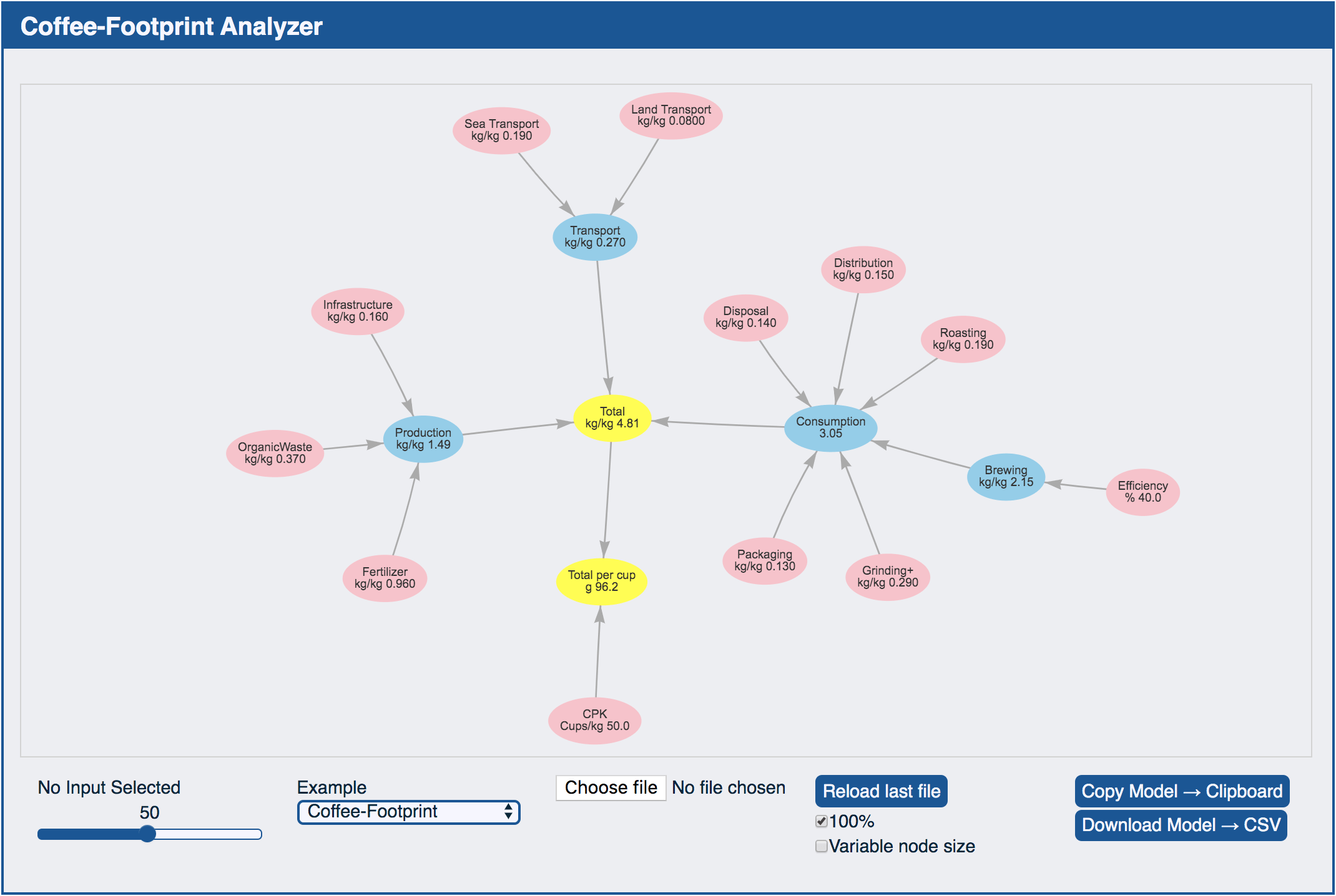A Web-based Tool for Conducting Your Own LCA
One of our aims in producing this course is to provide the information and tools you need to analyse your own carbon footprint. This will allow you to see which changes will have the biggest impact and help you determine which interventions will be most cost effective.
At the core of this is the Coffee-Footprint Analyser, an app created by Professor Steven Abbott that helps you to conduct your own life-cycle analysis. In this lesson, we explain how to use the app and how you can use the results to conduct your own LCA.
First, let’s look at the app and see what information it includes. The app is available at here stevenabbott.co.uk/Open-Analyzer/Analyzer.php. The opening screen will look something like this:
 The Coffee-Footprint Analyzer
The Coffee-Footprint Analyzer
The app calculates the CO2 contribution of each stage of coffee production. The main inputs in coffee production and brewing are listed in the pink ovals. Each is assigned a value, in terms of how much CO2 that step releases per kilogram of coffee produced. The blue ovals combine these inputs to assess how much each stage in the production of a coffee contributes. Finally, these are combined to give two totals in the yellow ovals: the amount of CO2 produced per kg of coffee and the amount of CO2 produced per cup.
The app already includes data on the various inputs involved in making a coffee, taken from a comprehensive study of the carbon footprint of coffee produced in Costa Rica and then roasted and consumed in Germany (B. Killian et al., 2013). This means that the relative size of the inputs may be different for different coffees or for different consuming countries, which would change the outcomes predicted by the app.
The purpose of the app is to allow you to easily calculate the effect of changing any of these inputs, in order that you can analyse the carbon footprint of your own coffee. It also allows you to predict the effect of changing your practices — for example, to determine how much CO2 could be saved if you switched to recyclable packaging. To change one of the inputs, just click on the circle representing the input and move the slider below to adjust the value. The app automatically recalculates the carbon footprint of the coffee. This video from Professor Abbott shows how to do this in more detail.
In this video, Professor Abbott walks you through exactly how the Open Analyser works.
The app also allows you to change the underlying model. For example, if you want to include additional inputs, you can easily do so. For example, if you disagree with the power consumption estimate for the brewing of the coffee which is taken from the research of Killani et al, you can sub in your own data. In the following video, Professor Abbott explains how to edit the model to take account of new inputs or combine the inputs in different ways. In future lessons, we will use this feature to dig a little deeper into certain aspects of coffee production.
The Coffee-Footprint Analyser includes examples of other models, which can be selected from the drop-down menu at the bottom of the screen. The model we’ll mainly focus on in this course is the one called ‘Coffee-Footprint’, but another model, called ‘Coffee-Grinds’, compares the carbon footprint of different methods for disposing of used coffee grounds. We’ll discuss this model in more detail in Chapter 3, ‘Packaging and Disposal’.
The other models included in the app are more relevant to other industries, but they offer good examples of how the app can be used to create more complex models, with multiple interdependent variables.